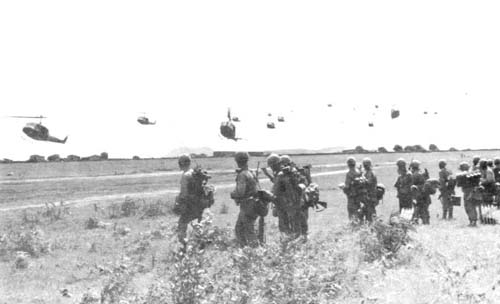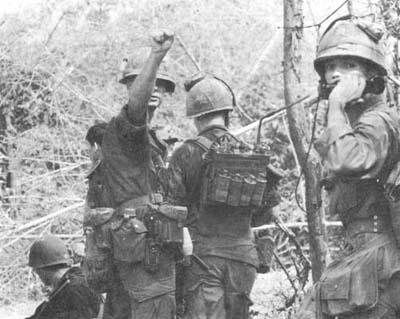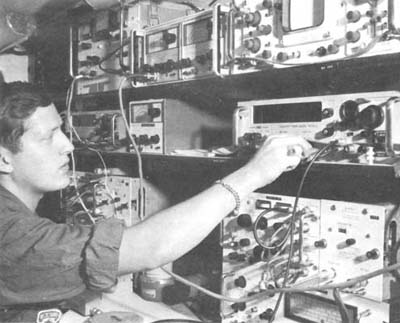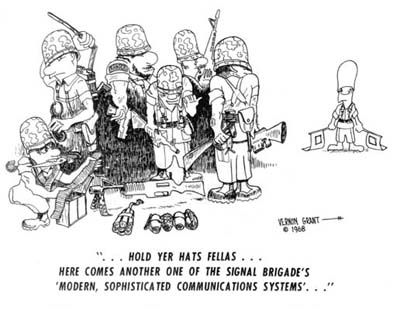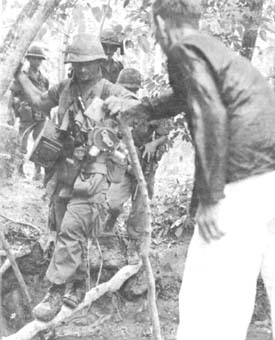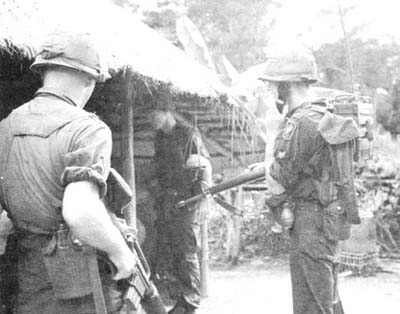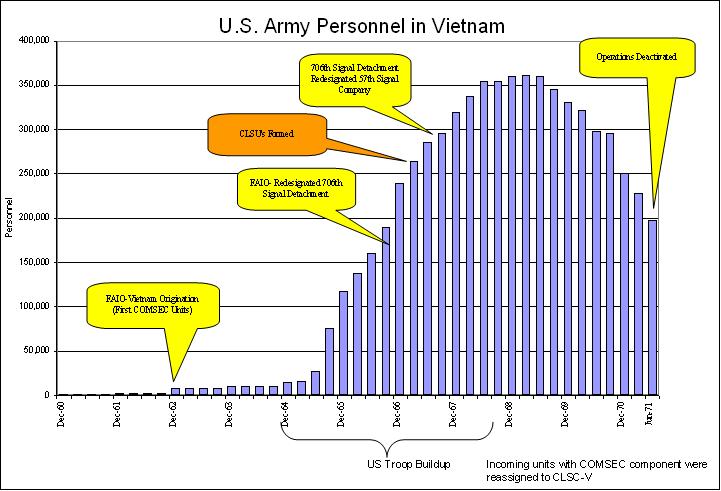Field combat level communication security was mostly nonexistent. Radio traffic between the few forces that existed were usually transmitted in the clear or using manual codes. Manual coding and decoding of radio messages was a slow and cumbersome process, thus it was not usually done. The belief at the time was the enemy was unsophisticated and laked the equipment and knowledge to monitor our communications. This was shown to be a mistake over time. (See Chapters 7 & 8 of "Division Level Communications" study on the Center for Military History website for their story of the Communications Security Threat and the Army response to that threat.)
At the time, it was the Us Army Pacific Command - Command Issuing Office (USARPAC CIO in Hawaii) that was tasked with all COMSEC matters under USARPAC command. They setup a Field Army Issuing Office (FAIO-V) in the Cholon district of Saigon to serve the needs at the time. Thus COMSEC logistics support in Vietnam was born. (Max - we will want to change this paragraph once you get the early story updated.)
No matter where the Command of the units supporting COMSEC Logistics fell, the Control of COMSEC materials and equipment always came back to the FAIO and USARPAC CIO in Hawaii. The USARPAC Command Issuing Office (CIO) ultimately reported back to the Army Communications Security Logistics Agency at Ft. Huachua, Az. That was the US Army world wide control authority for all COMSEC matters.
At one point, the CLSU's were lead by a team of two officers. A 1st Lieutenant was the Commanding Officer, and a Warrant Office as the Crypto Custodian. The Crypto Custodians reported to the CLSC-V were the Commanding Officers reported to the command organization in existence at the time.
In 1964 the buildup of US troops in Vietnam began and would continue until 1967. Suddenly, whole Divisions of the US Army were being redeployed to Vietnam. Prior to this, most US troops were concentrated from Saigon south to the Mekong delta region. The incoming organizations were being deployed all over the country. Along with the combat units came some General Support Groups (53rd and 80th General Support Groups) that had COMSEC components. Around the same time, Signal Support Detachments from the US Army Depots in the US were sent to supply higher level repair capabilities. (Sacramento Signal Depot, Lexington-Bluegrass Army Depot, Tobyhanna Army Depot and Ft. Gordon Army Depot) Through redeployment and reassignment, these COMSEC components were all brought together under the control of the CLSC-V. Detachments formed from these units were created and positioned to be close to the forces they supported. Thus forming the units that would eventually be called the CLSU's.
At this point, the COMSEC Support system in Vietnam was up and running. There were considerable efforts being spent on improving and securing the facilities of the CLSU's, but the units themselves were generally stable. As our tours of duty were 1 year, most of the personnel activity was a replacement rotation of new troops replacing those whose tour was done. It was a matter of performing the mission and maintaining the personnel needed to do so.
At some point (help here Max) the use of Identification Friend or Foe (IFF) gear began to be used on helicopters and fixed wing aircraft. This equipment, its codes and materials were rolled into the CLSC-V mission. The CLSU's would ultimately be tasked and staffed to supply the logistics support for this equipment as well.
The Vietnam Studies section of CMH website has a section "COMMUNICATIONS ELECTRONICS 1962-1970" that outlines the 1st Signal Brigade's role in Vietnam. There is a small, vague reference to our organization in this study. We were a very small and unknown part of the 1st Signal Brigade, which was a small part of the overall Army involvement in Vietnam. However, we fulfilled a critical role in support of the US fighting man in Vietnam.
